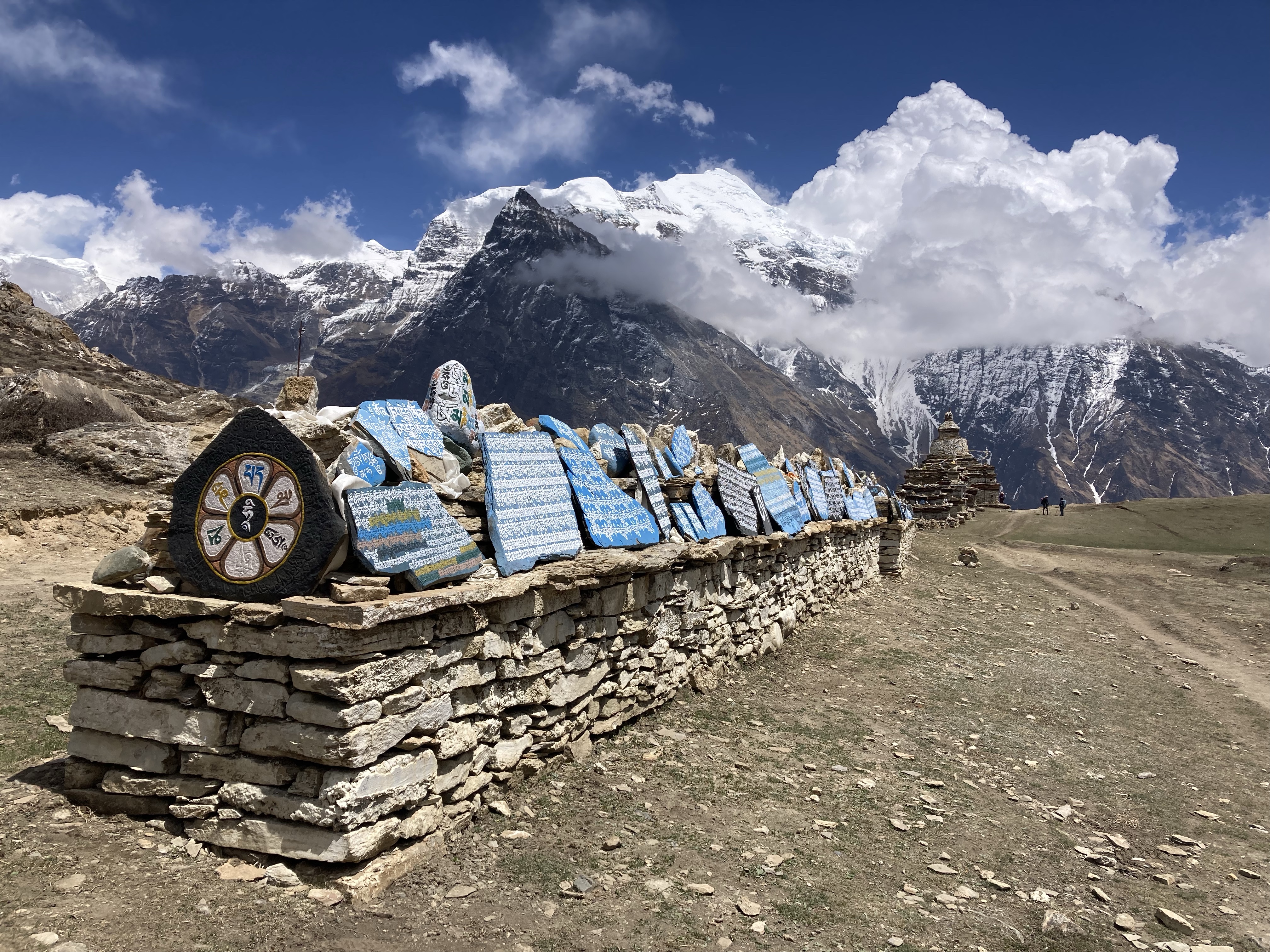

A 1 month trip with my dad
~ 7 days exploring Kathmandu
~ 8 days volunteering in Kakani
~ 9-day trek in Nar Phu Valley
~ 5 days in Pokhara
I look back, and I see my dad trudging up the steep snowy slope. My father Kevin Young, who runs about 5 miles every day on the beaches in Santa Barbara, huffs and puffs up the hill, breathing in and out with each step, his feet following the snowy footprints. His porter Rhamdhoj is just behind him, with two huge duffel bags filled with our jackets and sleeping bags perched on his shoulders.
The snowy peaks of the Himalayas stretch out before me. I’m standing at the apex of the 17,300 foot Kang La pass, higher than any mountain in the continental USA. My enthusiastic hiking buddies cheer me on, and after I catch my breath and chug some water, I join the cheering squad to welcome the rest of the group.
Today is the 8th day of our 10 day hike in the Nar Phu Valley. We started hiking in the dark at 4am, and it took us until noon to reach the top of the pass. I grin, thinking that the hardest part of the trek is over – but we still have 5000 feet of descent on a steep rocky trail.
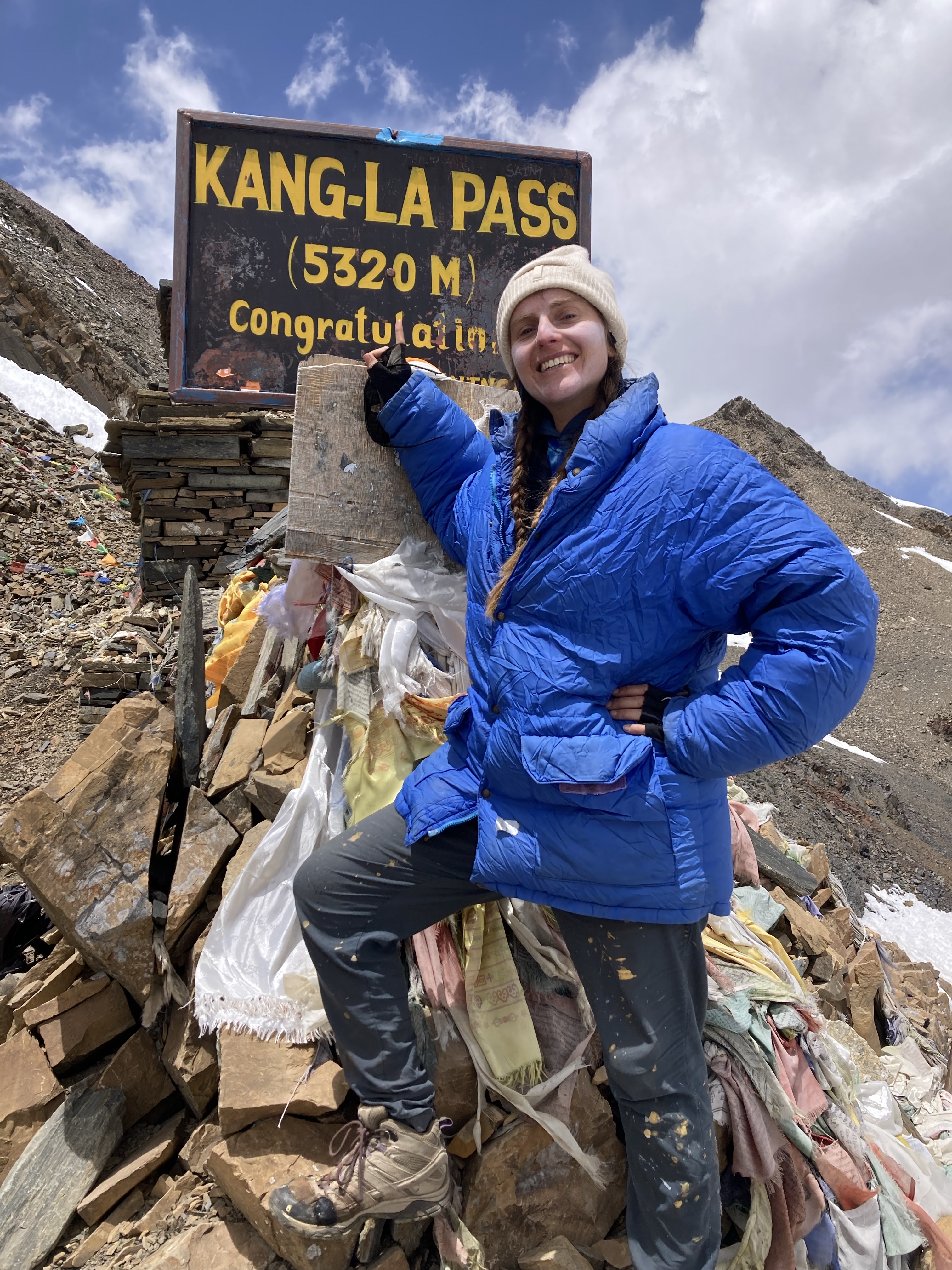

Arriving to Kathmandu
I landed with my dad at the hot and stuffy airport, and after we waited in line to buy a visa, we were picked up by Jeevan, one of our guides. His little car zig-zagged through a maze of honking horns and swerving motor bikes to our first hotel, a slightly ramshackle but incredibly cheap ($30/night for 2) hotel in the heart of Thamel, the tourist area. The noisy streets are lined with knock-off North Face and Patagonia stores, Tibetan souvenir shops, Irish pubs, massage parlors, and little corner stores.
Dad and I spent the first 3 days getting accustomed to the noise and the traffic, but also taking in the powerful new sights, sounds, and smells. Goats, dogs, cats, and monkeys roam the city. We find quiet corners of peace in the shrines and temples, which are oftentimes filled with cooing pigeons.
- A lesson from Kathmandu traffic : Go with the flow and all will be well, even in the midst of insanity.
After a few days in the chaos of Kathmandu, we met the rest of our tour group from Wildland Trekking. I was so glad that there were 2 other women – Jessica, a doctor from Virginia, and Cherie, a nurse from West Los Angeles. The three of us became good friends, giggling in our shared rooms at night and swapping travel stories. Our group also included Joe, a retired firefighter, Josh, a school superintendent, and our trip leader Dennis, a writer for Outside Magazine, and my dad Kevin Young.
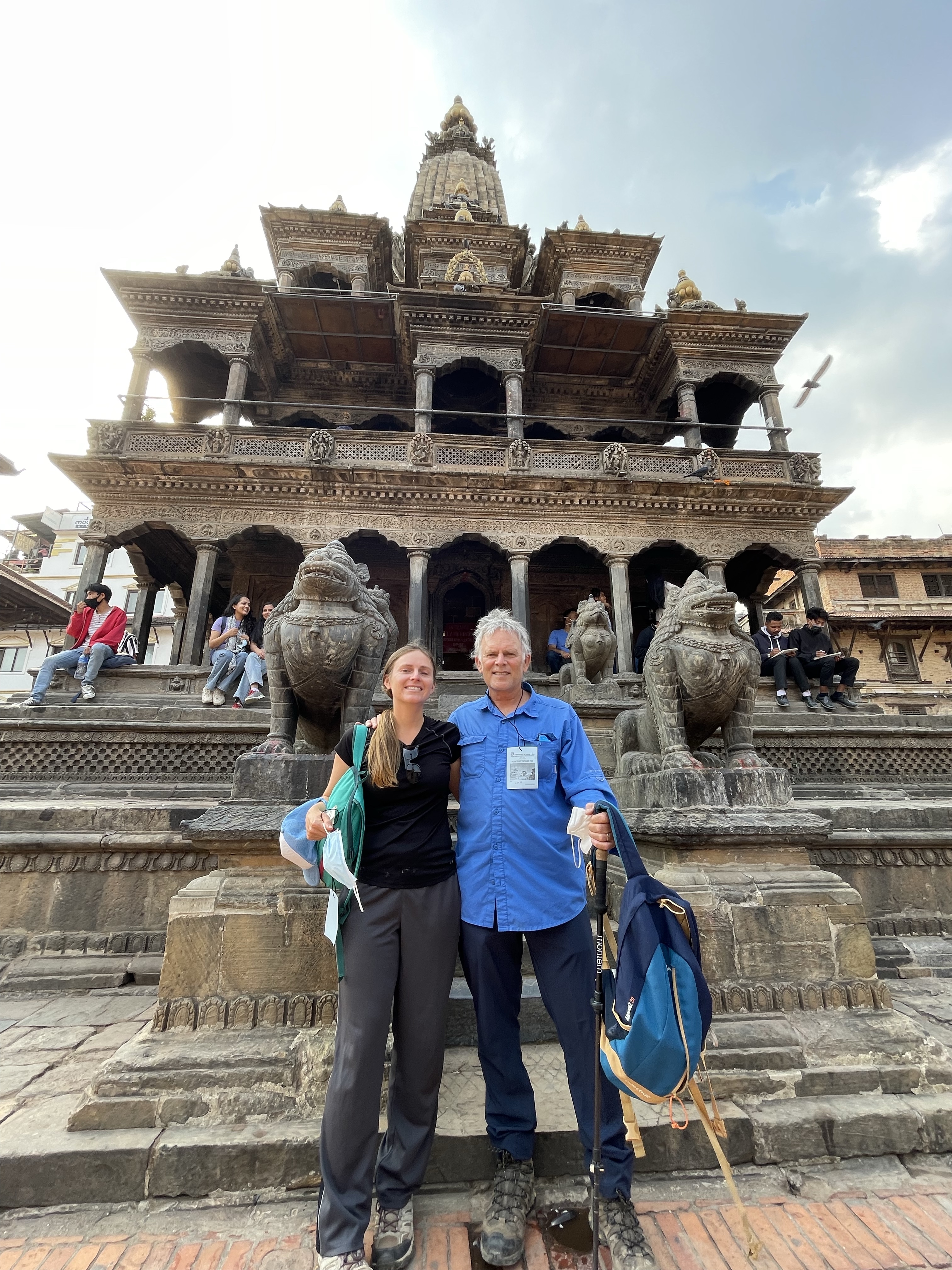





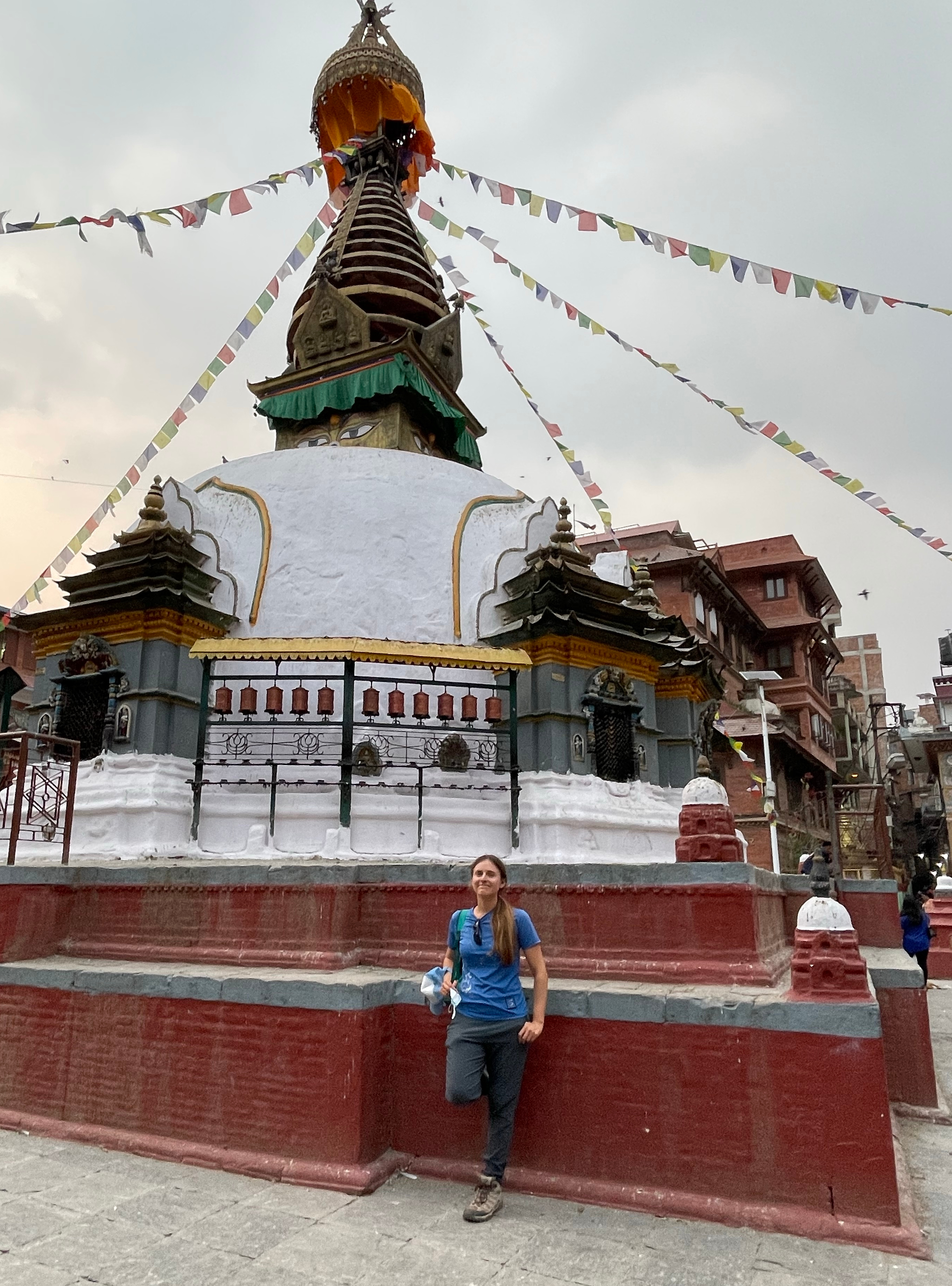
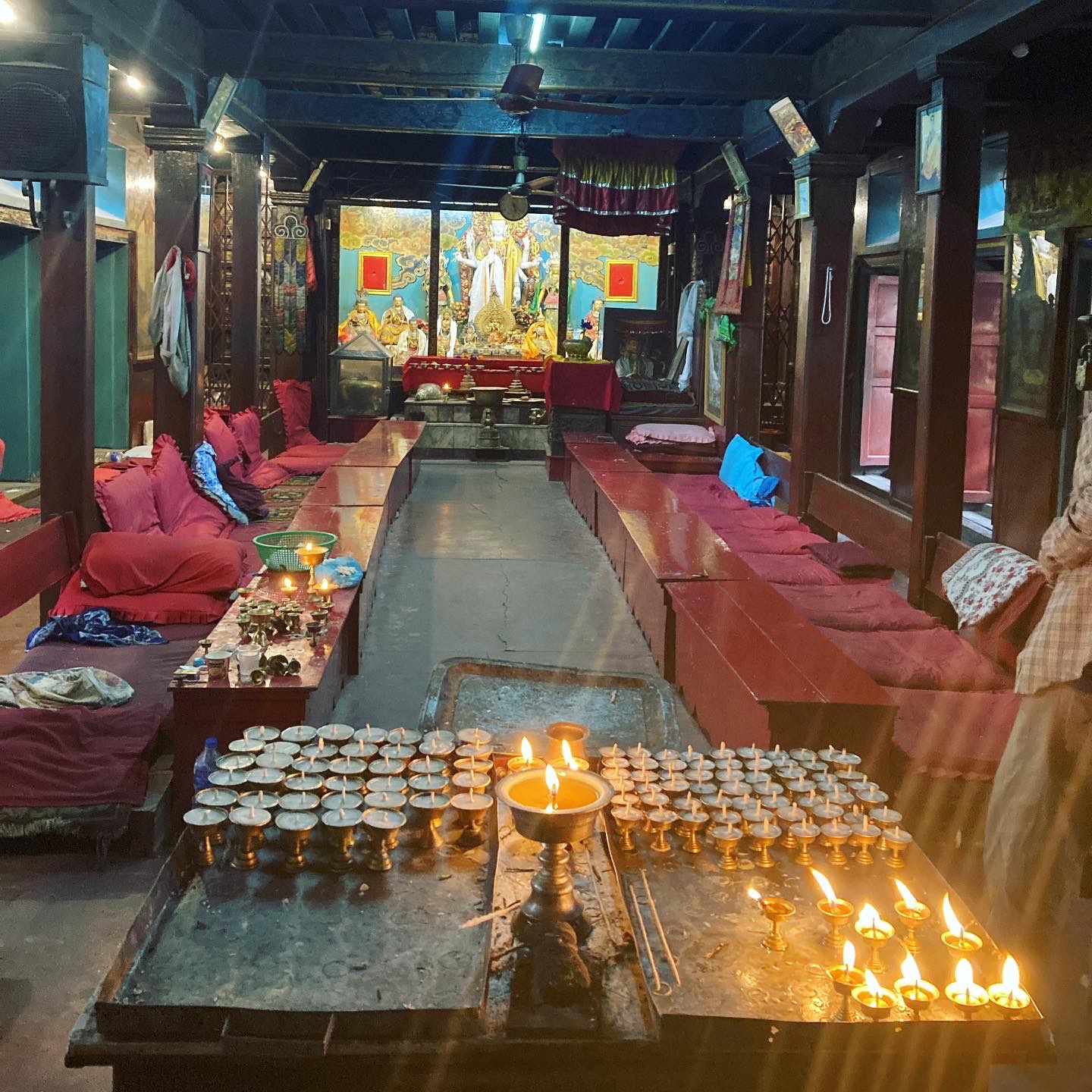

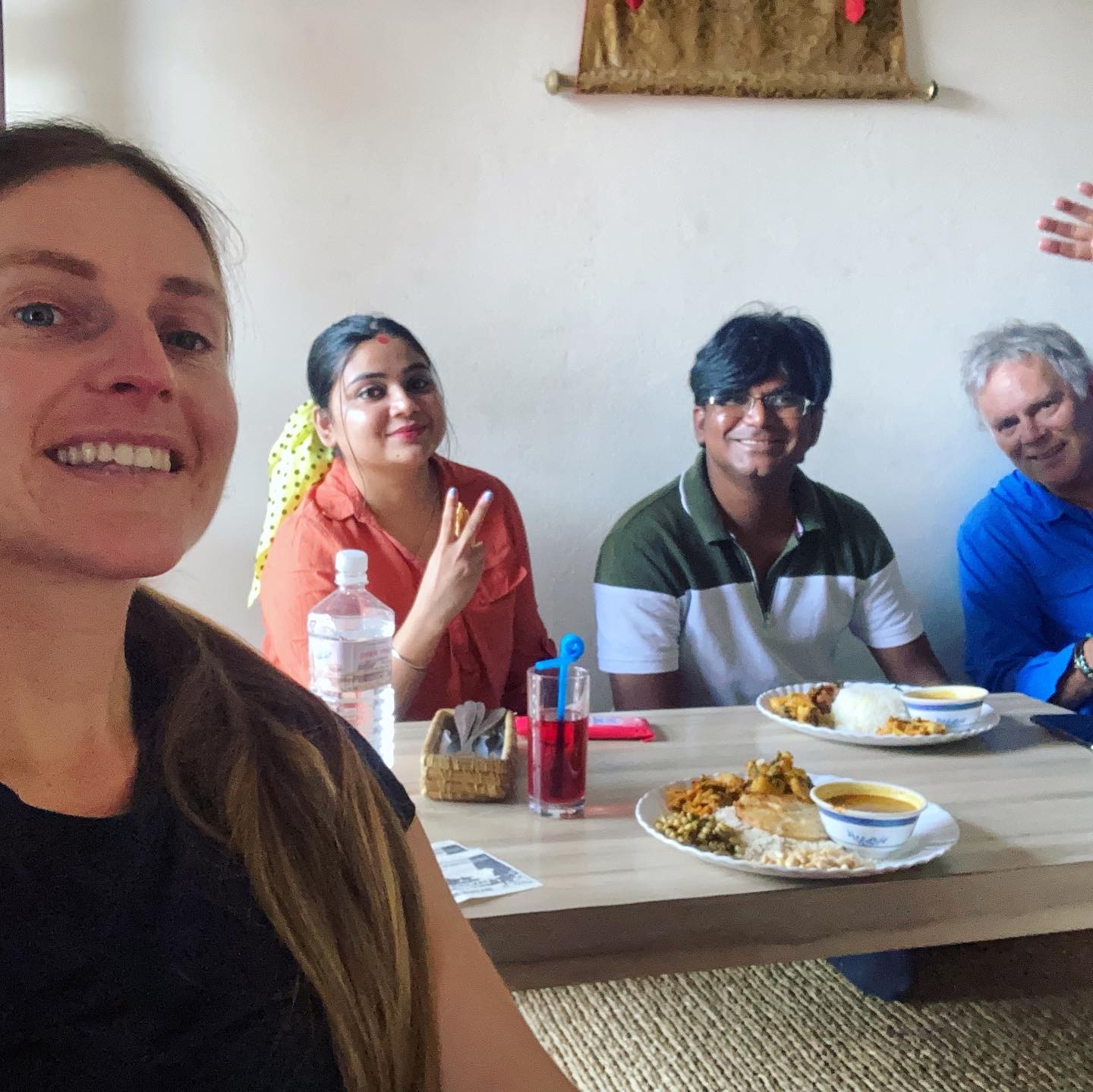





Painting a School in Kakani Village
After a day tour of Kathmandu to places like a an orphanage and trade training non-profit (NepalYouthFoundation.org) a monkey temple and a public crematorium (where for a $10 entrance fee you can watch bodies being cremated) the 6 of us loaded into a van and bumped down a pot-holed highway for 2 hours to Kakani Village. The community welcomed us with a ceremony including a parade and speeches. Part of our guided trip from Wildland Trekking included a week of volunteering and a $5000 donation to build a health clinic in Kakani Village.
We slept in fancy tents with real beds at Kakani Adventure Camp, where we were treated to spicy and delicious meals like momos (Nepali dumplings), curries, vegetable fritters, and wild nettle soup.


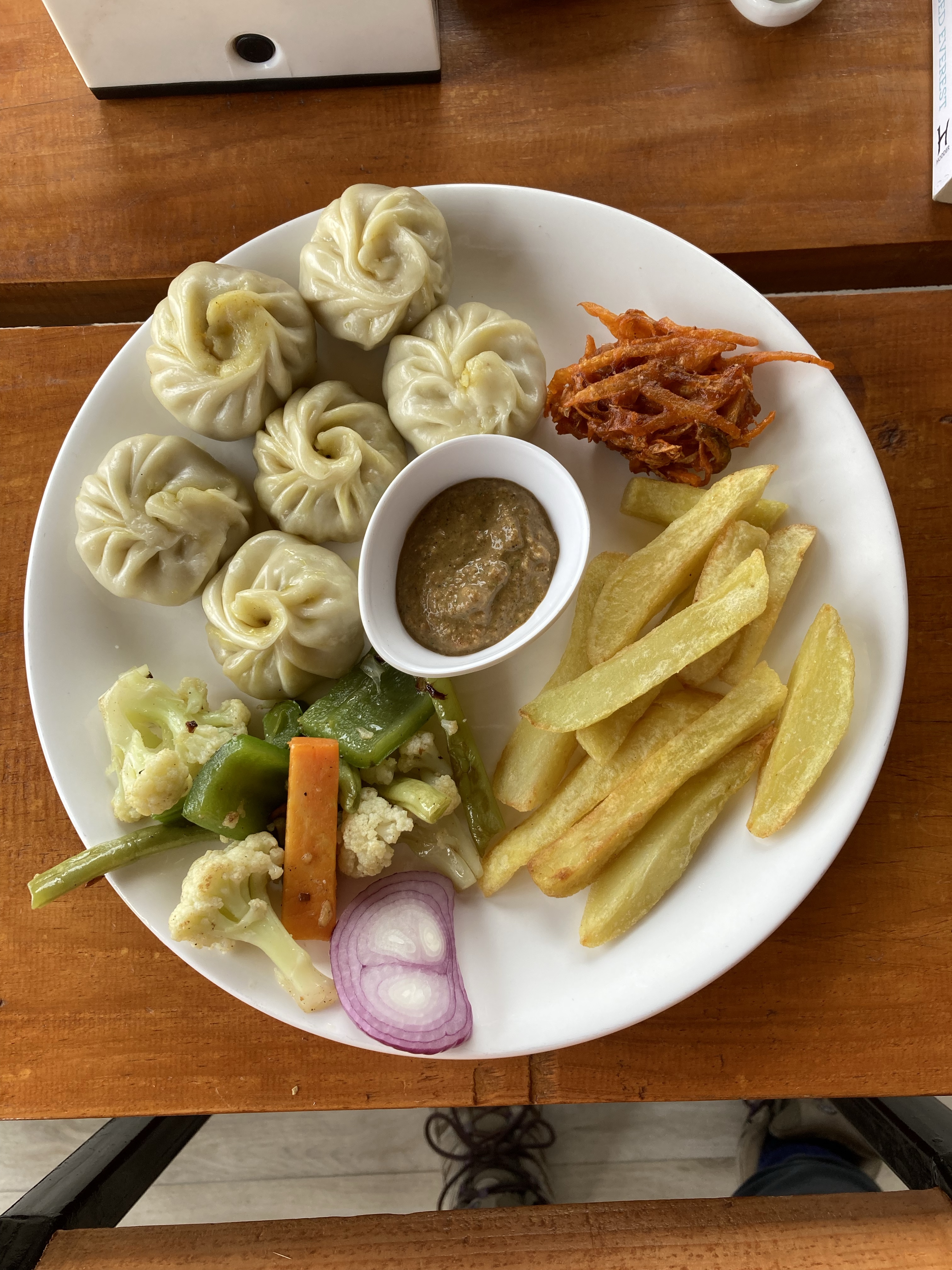
- If you travel to Kathmandu, Kakani Adventure Camp is only 1.5 hours away by bus or car, and for about $30 per day they will arrange transport for you and cook 3 amazing meals per day, and provide unique and comfortable tent lodging with panoramic views.
For our volunteer work, everyday we hiked about 2.5 miles each way to Kakani Brighter School, which we painted yellow. Kakani Brighter school was founded by Japanese donors in 2006 who never got around to painting it yellow, which is the traditional color of Nepali schools. We 7 Americans along with some Nepali helpers cleaned the brick walls, primed them in white, and painted the walls. As we were only there for 6 days, a local painter was hired to paint the harder to reach higher areas and the back of the school.
Meanwhile, every day I talked with students and teachers, and befriended Binod, the school principal. We chatted about the differences in education systems and values between Nepal and the USA, and he gave me a class of about 40 (very well behaved) students aged 5 to 15 to teach on our last day there. I lead an impromptu class featuring geography, hygiene, music, and self-confidence. We sang “Head, Shoulders, Knees, and Toes,” talked about the importance of hand-washing, and practiced mindfulness and positive affirmations. Jessica and my dad helped teach, too.
We noticed that the bathrooms at the school had sinks but no soap – so my dad bought soap for the whole school, as well as soccer balls and some notebooks, pencils, and pens. On our last day we were honored with a beautiful ceremony where the students, teachers, and principal thanked us and presented us with colorful scarves. I’ll never forget how excited the kids were to receive their soccer balls. Some things transcend language, like joy.
We were told the school did not own a computer, even though some older students took a computer class. Upon our return to the USA, my dad raised $500 from our facebook friends and donated 2 computers to the school via the nonprofit “Mothers and Children Arts Foundation.”
We thanked the staff at Kakani Adventure Camp by cooking a meal for them – it was Jessica’s idea, who had also volunteered in Africa. It was nice to reverse the roles to cook for the chef and serve the waiter. Our waiter Nishan was a cheerful Nepali 19-year-old who joined us for morning yoga and taught me some Nepali phrases. He was very sad to see us leave and I gave him one of my ultimate frisbee shirts.
Thanks to Nishan and a lot of repetition, I learned a few phrases and words in Nepali so I could connect with the locals. How are you – tapailai kosto cha? What’s your name? Tapai ko nam ke ho? My name is Amber. Miru nam Amber ho. Kukur means dog. It brought me joy to practice with people who I met.


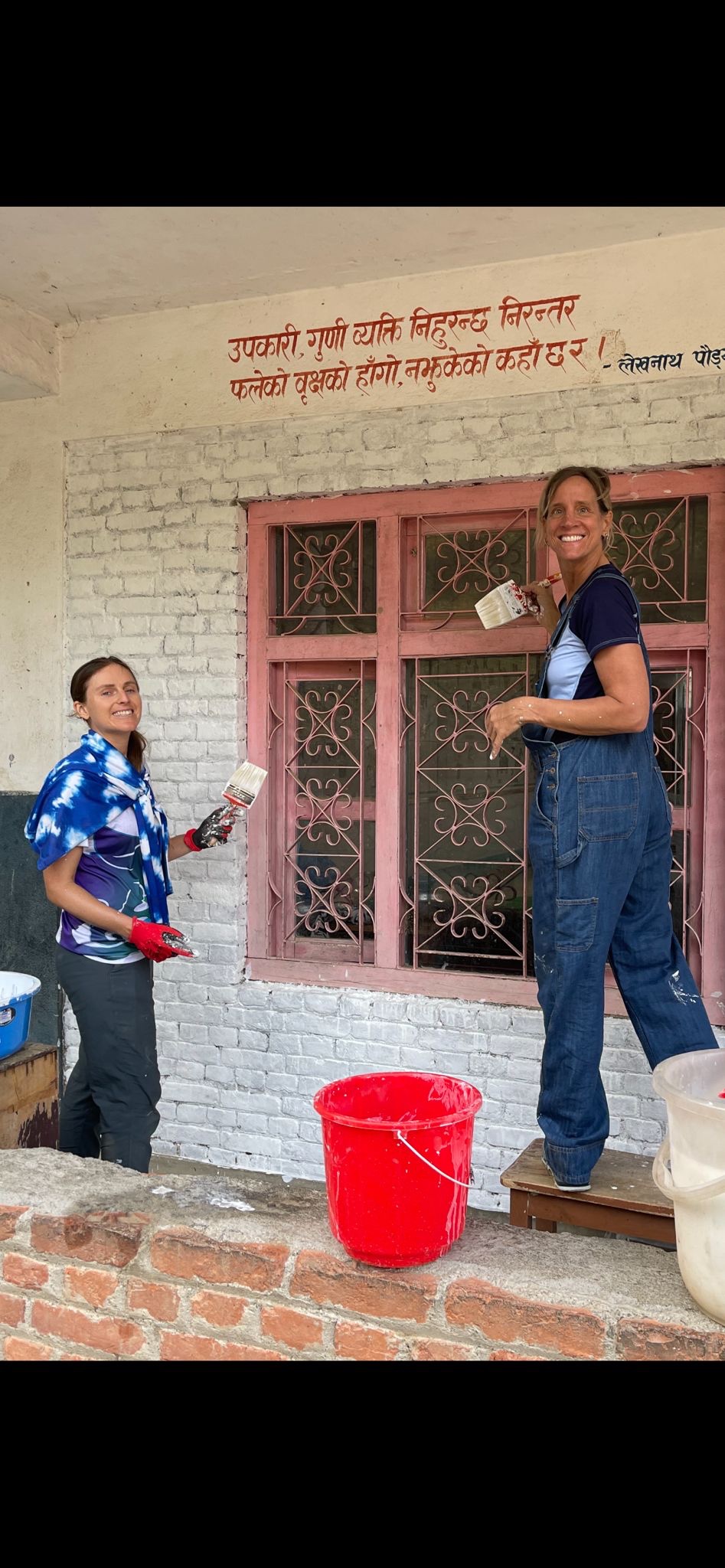
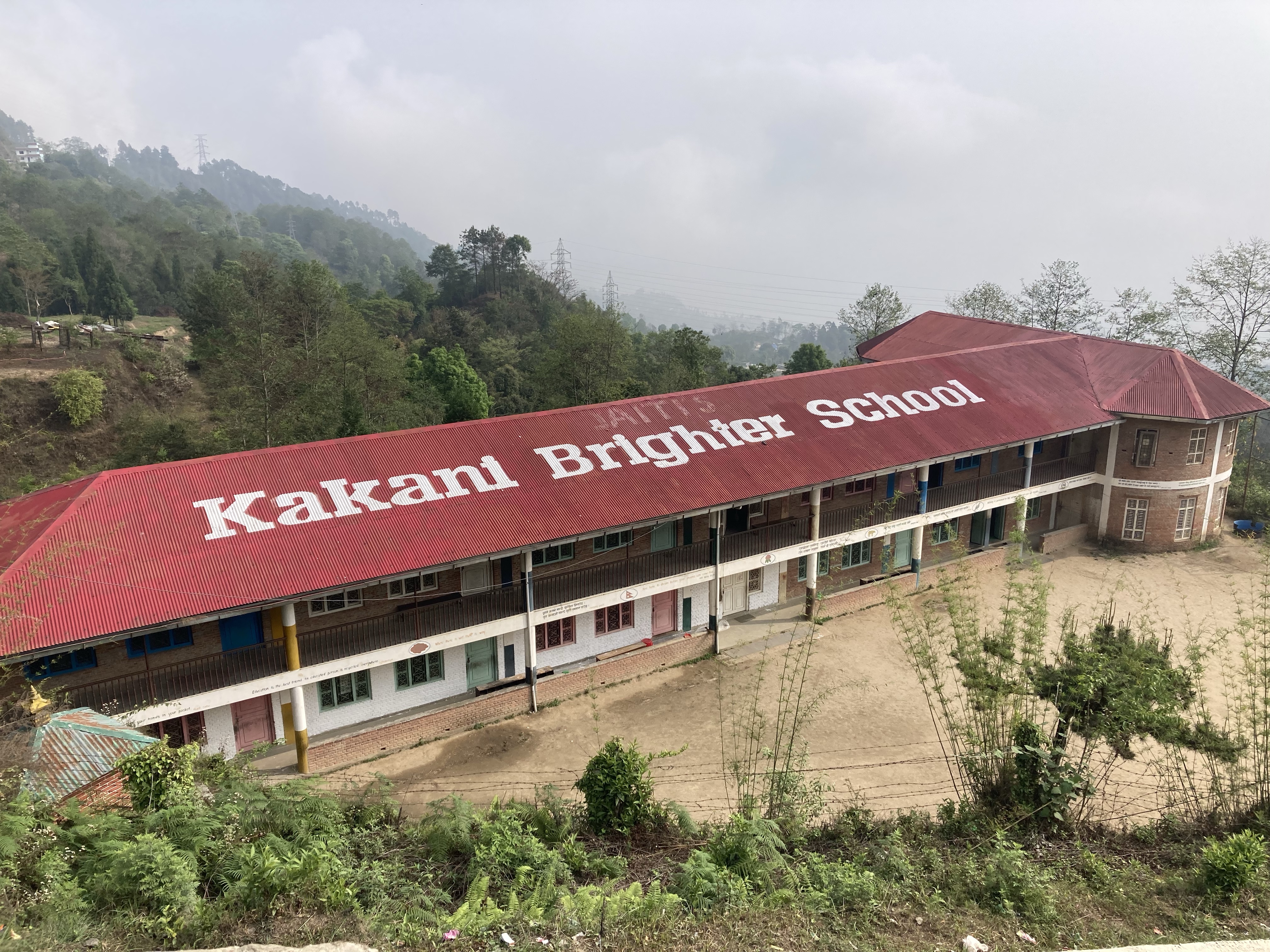







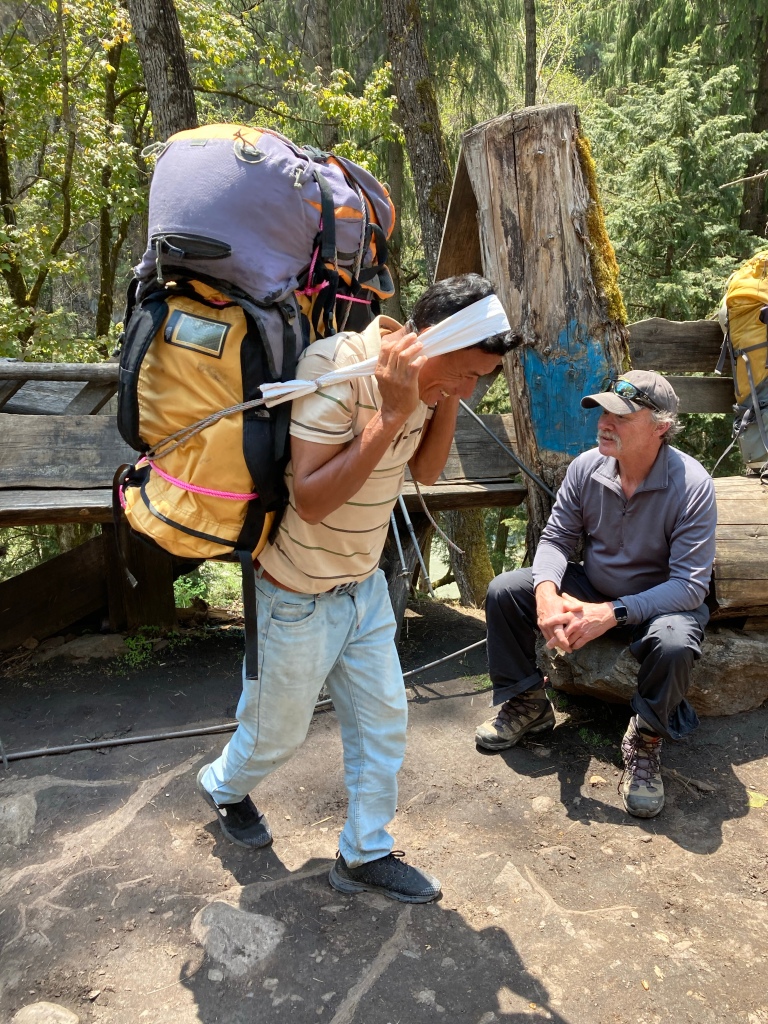
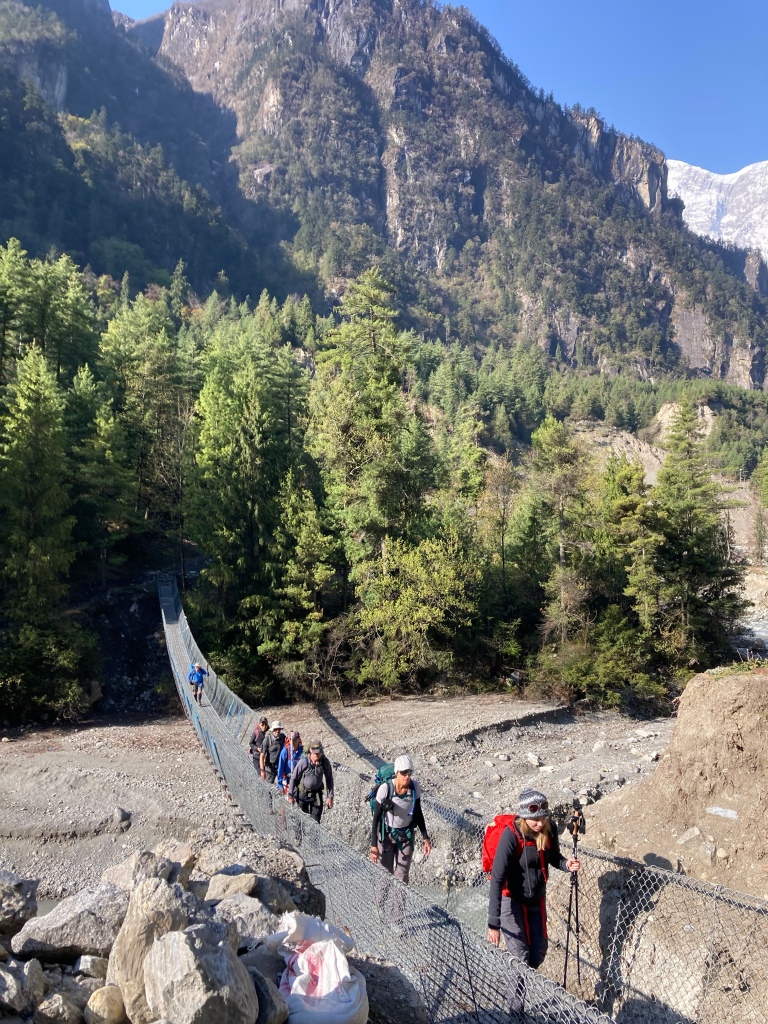
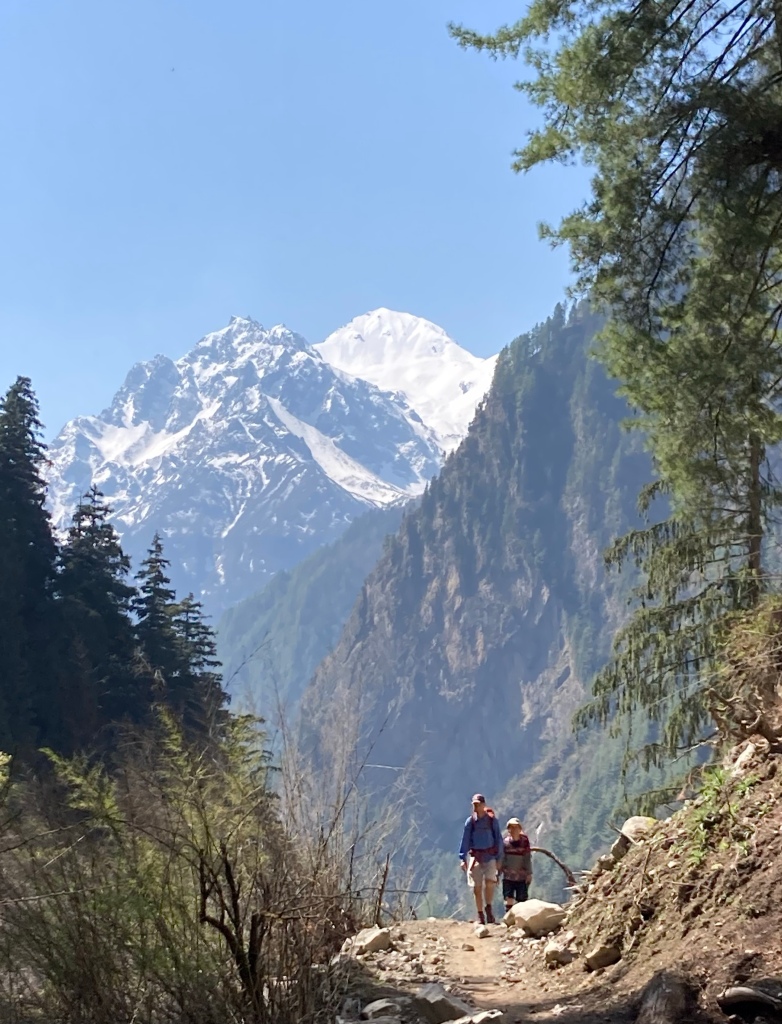


The 9-Day Nar Phu Trek
After a much-needed rest day in Kathmandu, where I got a $35 90-minute massage, we set off on the next part of our adventure – a 9-day trek in the Nar Phu Valley. But first we had to get there. We loaded up on a bus with our porters, guides, and hikers at 5am. It took 6 hours in a bumpy bus to Besisahar where we had dahl baht (lentils with rice and potatoes) for lunch, and then continued on a bumpier 4-wheel drive jeep down swerving mountain roads.
The road we drove on was part of the Annapurna Circuit, so we saw trekkers trudging through the dust of our jeeps. Though less appealing for hikers, these roads significantly improved the lives of local villagers who are able to get resources more easily thanks to vehicular transport. We also hiked to towns where resources like flour, rice, sugar, tea, building materials, and other essentials have to be carried by mules or porters.
We first reached Kote, a dusty town next to the road where we spent our first night, and set the next day for a 12-mile hike across many swaying metal bridges. At one point the trail went directly under a raging waterfall along a cliff.
We reached Meta, a tiny ‘village’ of two hotels, where we spent the night in a hotel with no heating or bedding. Thankfully our porters carried our heavy sleeping bags and down jackets for us, so I was never cold at night even while sleeping with snow covered peaks all around us.
The next day was 11.6 miles and 1500 foot elevation gain and ended in Phu, a town with an altitude of 13,500 feet. The scenery was reminiscent of the Grand Canyon, including the mules.
In Phu, we distributed some of the 200 solar lights we had been carrying with us to donate. We made sure to give one to every household in Phu, and meeting all the villagers and seeing how grateful they were was so heartwarming. We were invited to have tea and visited with an older lady who told us about her life.
During the harsh winter months, the whole village descends the valley to Meta (where we spent our first night) to spend the winter in a slightly warmer climate. The lower-altitude villagers open their homes to host those from higher altitude places for the coldest part of the winter. I love how the community members support each other when times get hard – it’s hard to imagine this happening in the USA. If your house was too cold to live in the winter, can you imagine your neighbors inviting you to come live with them?
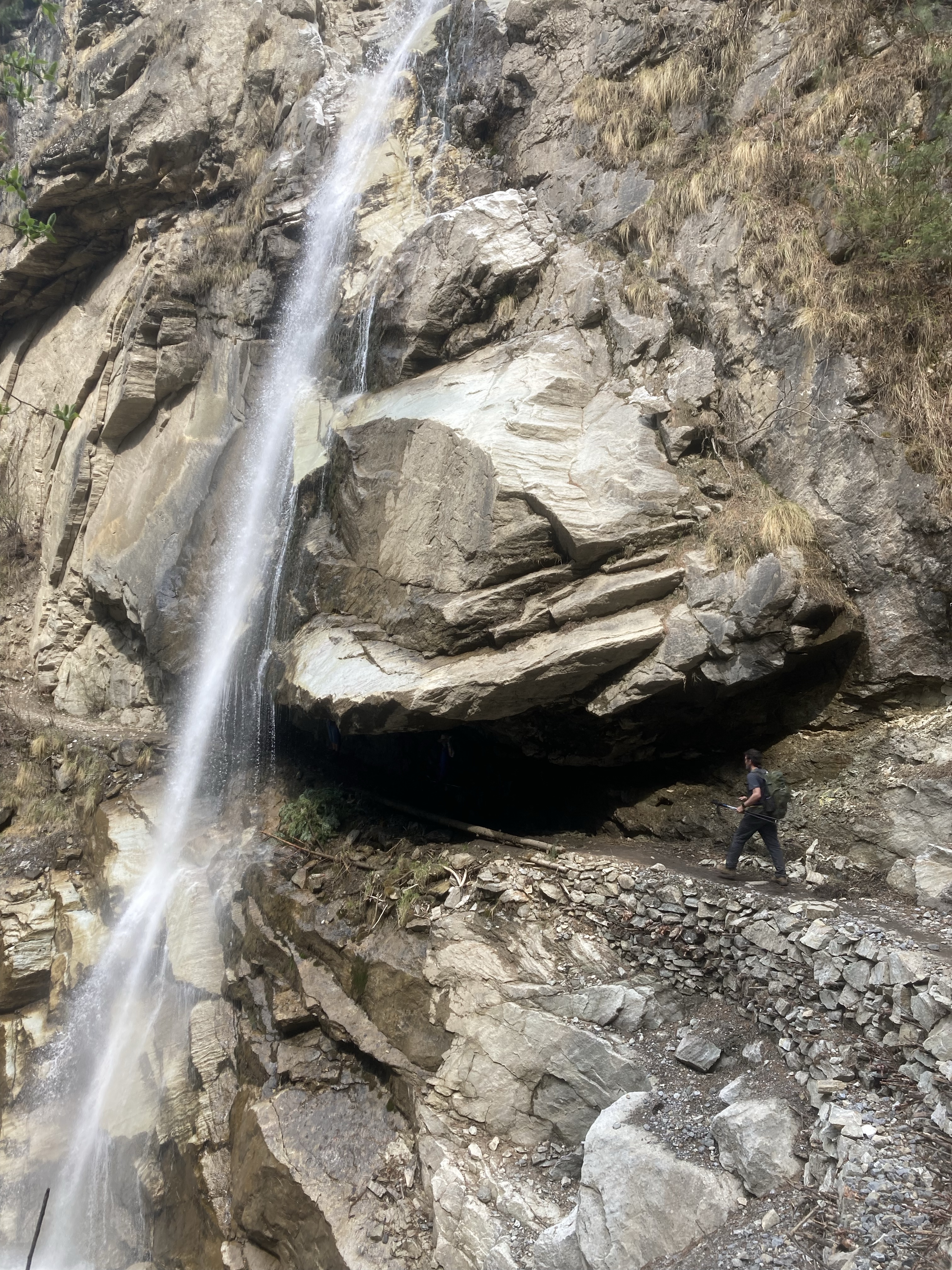

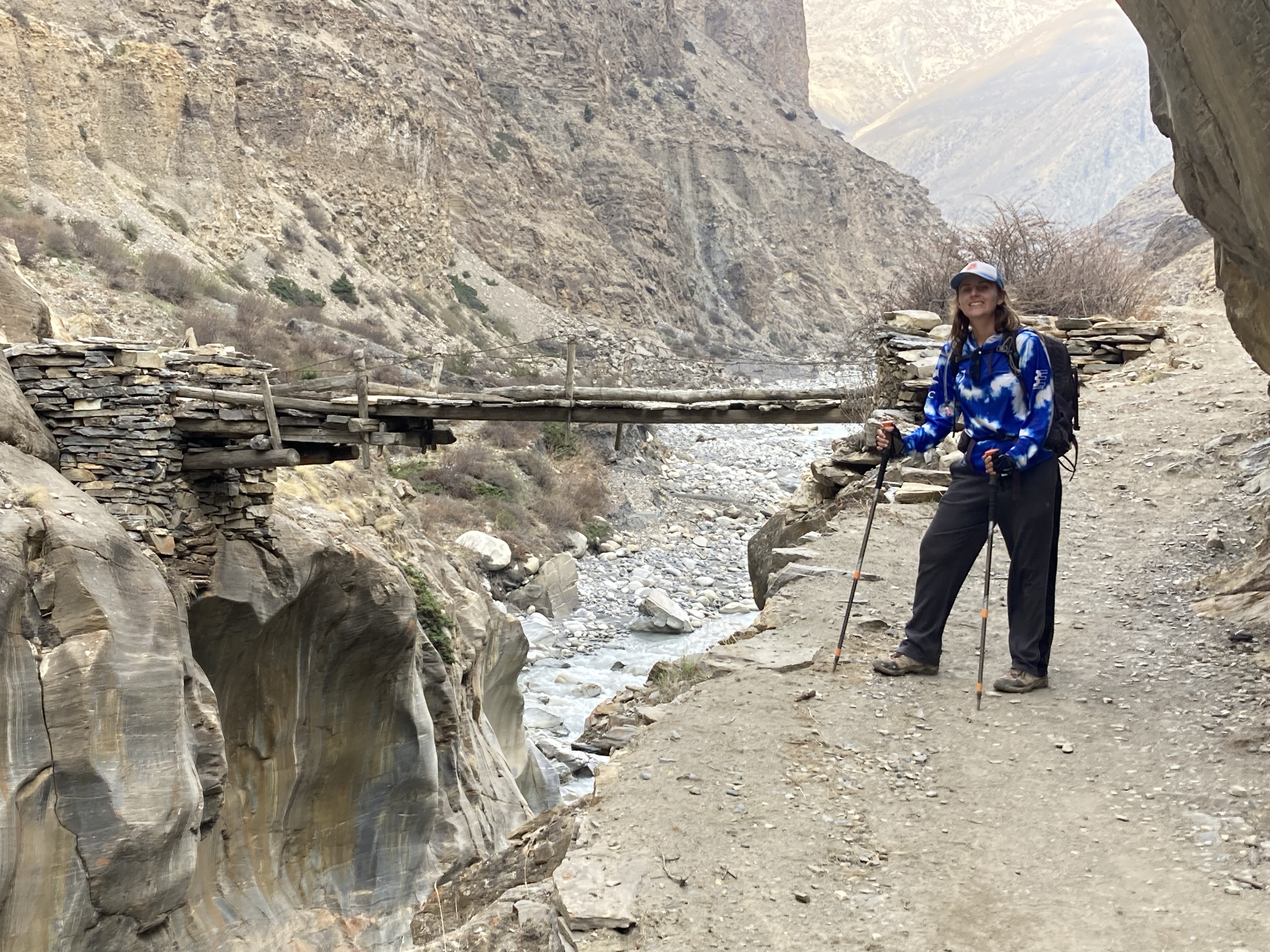



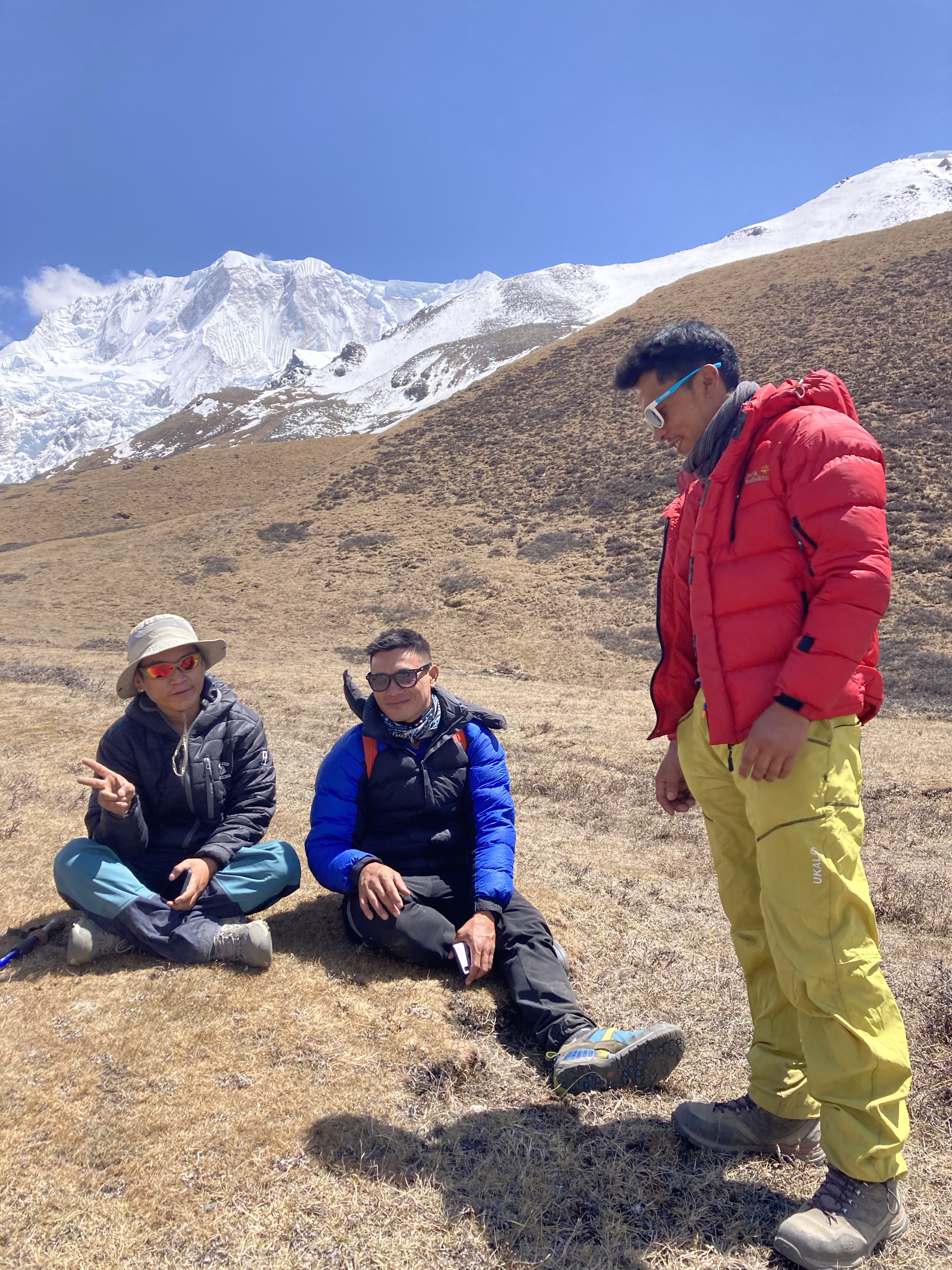



The next day, I went on an optional 11.4 mile hike to Himlung Base camp, elevation 15,800 feet, where I met dozens of climbers staying in bright yellow tents and attempting a climb of 23,345 feet. There is an alpine academy where students are summiting as part of their final project – it takes them about 20 days!
We continued the next day 14 miles down a Grand Canyon-esque trail, dodging mules and porters delivering impressive loads to the village. On the way there, we had to cross a bridge with a 1000-foot drop off over a raging river. We stopped at an old monastery that was abandoned because it is in an earthquake zone.
We slept at Narfetti Monastery, elevation 11,600 feet, nestled in the Nar Phu valley and only accessible by trail. Donkeys and people carry the supplies needed for the monks and hikers who stay there. When I arrived, I saw some porters and a few other hikers playing volleyball. Of course I had to join in. This is where I met Chris and Valentine, two French hikers doing the same route as us. We became good friends, and I was able to see them again in Pokhara and Paris, and I hope they will visit me someday in California (or wherever I happen to be living in the world!)
After the monastery was the big trek up and over the Kang La pass, the longest day of our hike – we rose at 3am and I finished hiking around 5pm – so it took 14 hours!
Once we finished our trek – my knees were very sore from the last day of steep downhill – I said goodbye to the group. We had a ceremony where we tipped the guides and porters, which pretty much doubled their salaries, and made speeches of appreciation for them.
My dad did another 6 day trek to the Annapurna Sanctuary with his favorite porter Rhamdhoj, and I had had enough hiking so we split up. Along with my new friend Cherie from our hiking group, I relaxed for 5 days in Pokhara, a quaint lake town perfect for a tourist’s respite. I got massages, took a yoga class every day with views overlooking the lake, and met up again with my new French friends Valentine and Chris and for boat rides, short hikes, and live music at night. I borrowed a guitar from some of the local musicians and played some songs at a few of the bars (see my youtube channel to hear my music – youtube.com/ambertraveling).





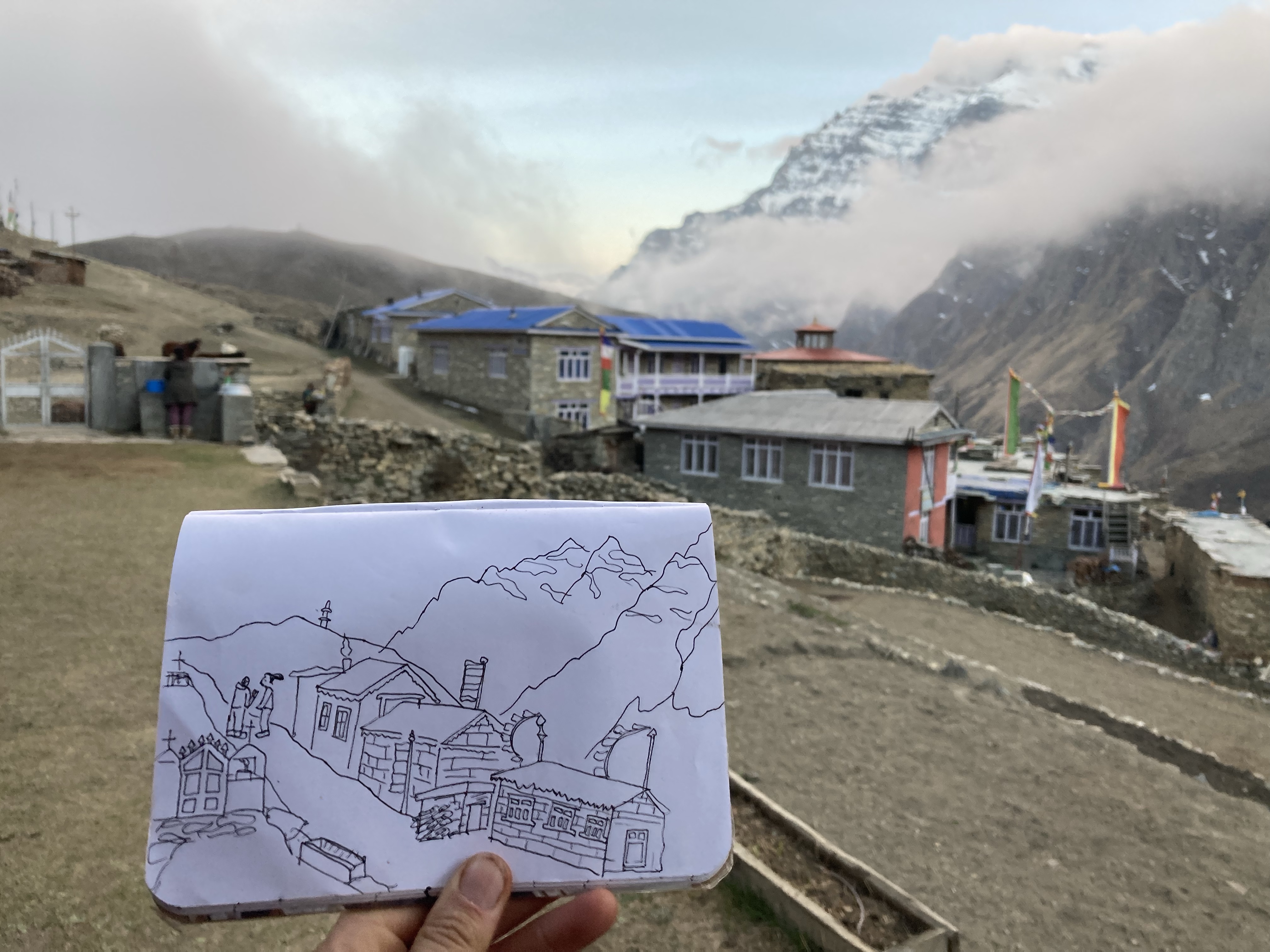


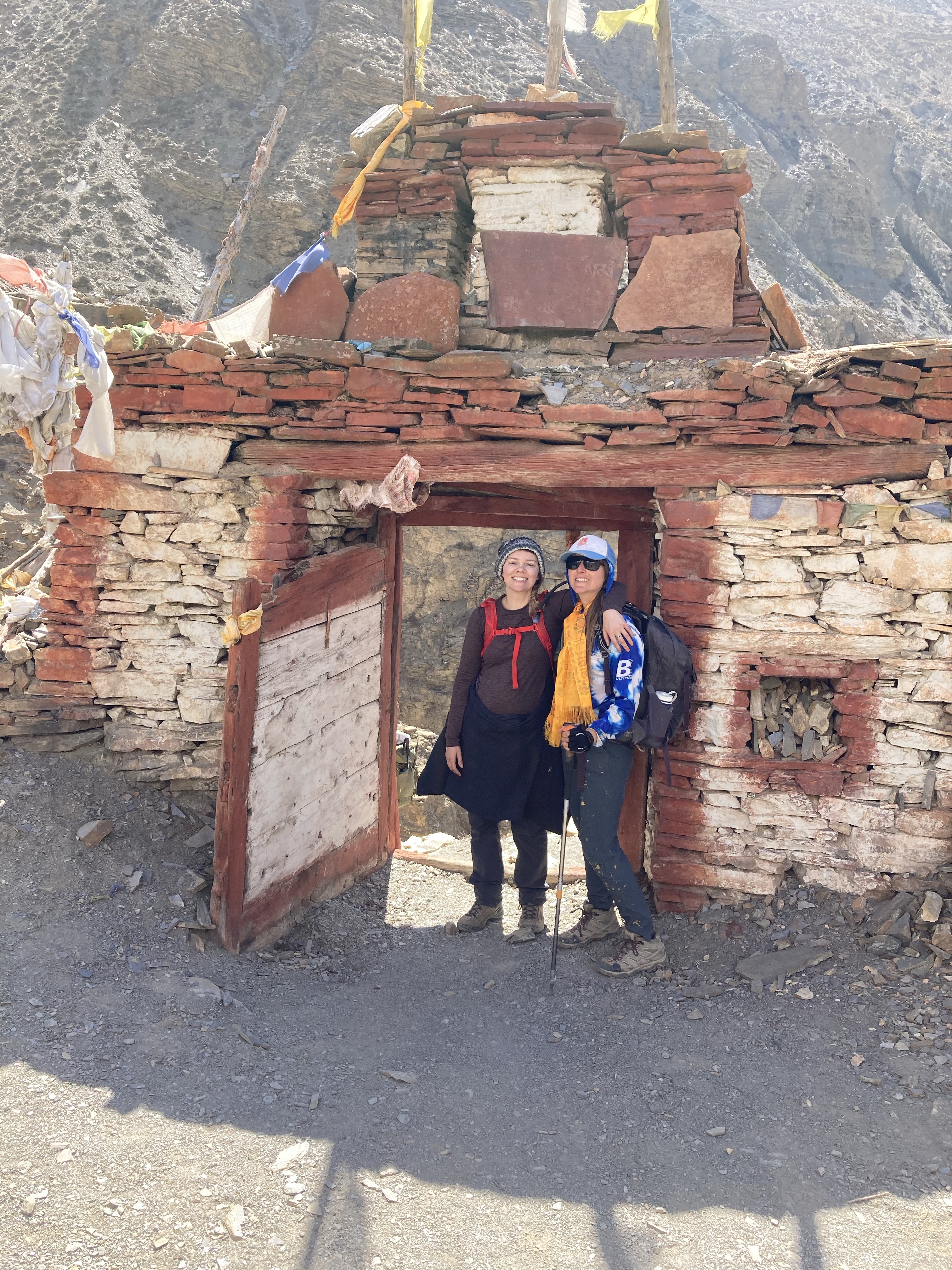
To Sum It Up
For me, travel isn’t just about seeing amazing places – that’s just one of the many perks. It’s about meeting people and learning about them. How do they live? What do they value? What do they love to do? Knowing this about different people expands my worldview and broadens my perspective. It shows me what is possible in this life that I couldn’t learn just by staying home. In my hometown of Santa Barbara, California, most of my friends and acquaintances have fairly similar backgrounds, and I LOVE to meet people who have had such a different life story to share.
I’d love to go back someday. There are so many more hikes I could do – I’d like to do the Annapurna Sanctuary someday, and maybe Everest Base Camp.
I am so impressed by the Nepali people who survive with so little, but never cease to be generous. We have so much to learn from them. They are resilient and welcoming people. Nepali people who survive with so little still smile and wave at us when we hiked past their homes. We met some women who had to hike 2 hours every day to collect water from a raging river. These same women offered us tea. After this trip, I feel so much more gratitude for all the conveniences I have in my life – electricity, running water, trash pick-up, internet…
If you have a chance, go to Nepal. The people are incredible. The mountains are epic. The food is flavorful, varied, and vegan-friendly. I made friends that I will keep for life, and I’ll never forget the feeling of being surrounded by the peaceful and majestic Himalayas.

Hello, Amber! What a wonderful story! Indeed, travel for me has always been “about meeting people and learning about them,” too. I especially liked your story with the school children and the staff members. What a precious experience it was for you and for them… Thank you very much for having me read this. Please take care and best regards to your dad, too! – Harumi from Fukui, Japan.
Mesa Paper? B ________________________________
Another great post Amber. The pictures and your descriptions really gave me an appreciation for the people and also for what amazing people you and your dad are!